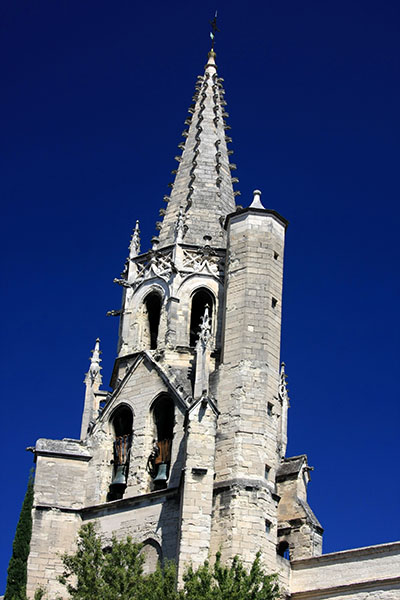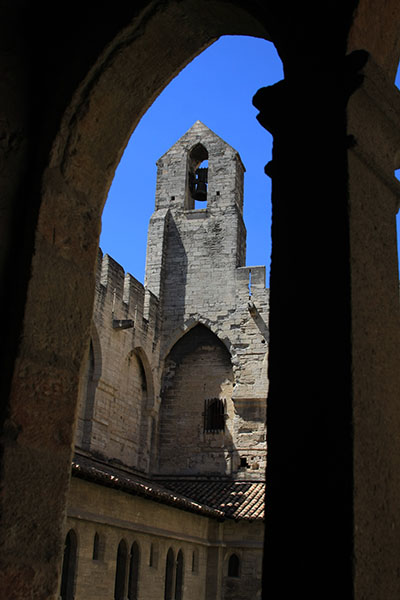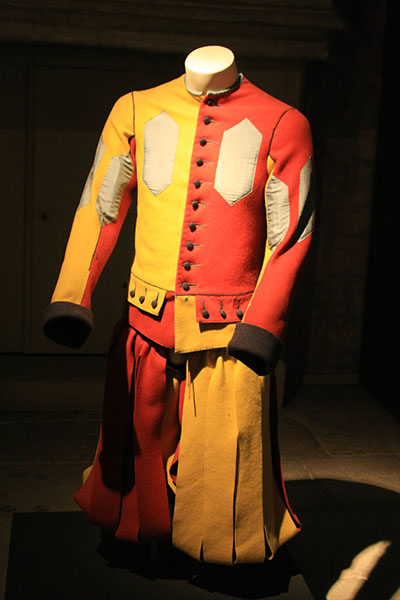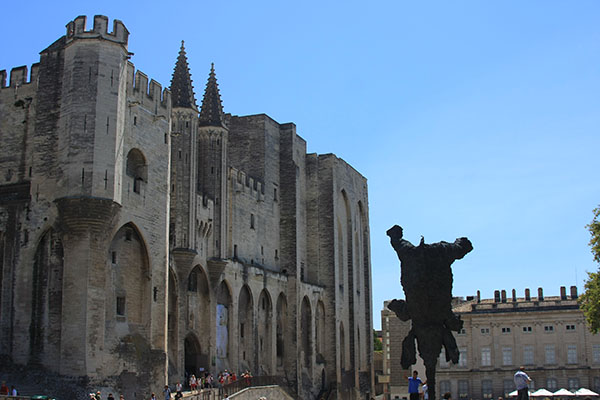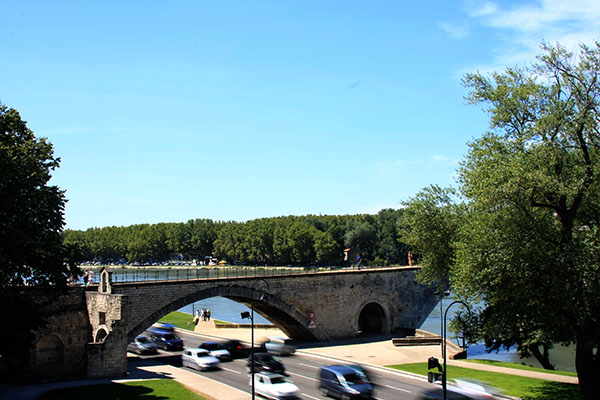Yet another August trip was to the beautiful and historic city of Avignon, with Gabi and Philipp.
Although I’m tempted to get into a lot of history (it’s fascinating … but, perhaps just for me), I will keep it relatively superficial. Most importantly, it was the seat of the Catholic Church (and necessarily not the Roman Catholic church) during the 14th century. This led to what’s known as the schism in the Catholic Church. It all came about when a guy named Raymond Bertrand de Goth was elected pope in 1305 and was renamed Clement V. He was of French origin and had been the archbishop of Bordeaux. He decided to move the papacy to France and unusual for a pope, he spent his pontificate, by and large, supporting the French monarch, Philip IV.
In order to become the new papal city, Avignon went through a major transformation. The Pope’s palace, the Palais des Papes, was a result and became the largest Gothic castle in Europe. Avignon remained the seat of the papacy until 1377 when a further split happened. Avignon was to become the seat of the anti-popes until the 1789 revolution overcame the last vestiges of the church’s religious structure in the city. Then, during the 19th century the palace was used as a military barracks and prison. The slow decay and military occupation destroyed much of the original splendor of the palace, but in 1906 it became a national museum and has been nearly continually repaired ever since. In 1995, the Avignon city center (including the palace) was named a UNESCO world heritage site. Ok, enough history, on with the images.
The Palais’ bell tower is still magnificent.
A view of an interior courtyard in the palais.
A soldier’s uniform … and not too much different than the Swiss Guards of today, although those weren’t unveiled until January of 1506.
A wooden model of what the Palais loos/looked like from the exterior.
War, peace and beauty in the same image. Seems to often characterize churches (any).
From another interior courtyard.
This elephant is a recent addition to the front of the Palais. He was placed there by the artist Miquel Barceló this summer as part of a larger exhibition throughout the city. He’s made of bronze, weighs six tons and is nine meters tall. Last I read, he’s scheduled to come down today, 7 Nov 10.
The exterior wall of the Palais.
Elephant and Palais.
As the title of this post, of course we had to visit the famous bridge. As you can see, ironically, it doesn’t actually cross the river anymore. It has been non-functional since the 17th century. However between the 12th and 17th century, it was the only fixed crossing of the Rhône from Lyon to the Mediterranean.
In the famous song, people would dance on the bridge. However, while it was functioning as a bridge, people would probably have danced below it, if they danced at all. Today, there is a road in place of dancing people.
On the bridge, looking back to the Palais and downtown Avignon.
Gabi and Philipp kissing, instead of dancing on the bridge.
One final image of the bridge and a little song…
Sur le pont d’Avignon
L’on y danse, l’on y danse
Sur le pont d’Avignon
L’on y danse tous en rond
Les beaux messieurs font comm’ ça
Et puis encore comm’ ça
That finishes our trip to Avignon.
Next up will be another trip to the Calanques and the famous wine town of Bandol.
Until then…
–Jim

